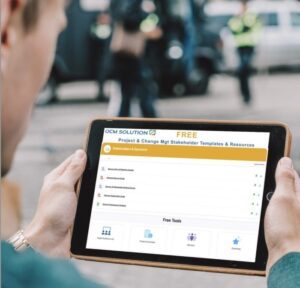A/B testing for direct campaigns is revolutionizing how marketers approach their strategies. By comparing two versions of a campaign to determine which one performs better, businesses can make data-driven decisions that enhance customer engagement and drive results. This method not only saves time and resources but also allows companies to innovate their marketing efforts with confidence.
This comprehensive guide will delve into the nuances of A/B testing, exploring its significance in direct marketing, effective strategies for implementation, and how it can lead to remarkable improvements in campaign performance.
Understanding A/B Testing in Direct Campaigns
A/B testing is a crucial methodology in direct marketing, allowing marketers to make data-driven decisions that can significantly enhance campaign performance. By comparing two versions of a campaign element, such as an email subject line or a landing page, businesses can determine which option resonates better with their audience, leading to increased engagement and conversions.The process of setting up an A/B test involves several key steps.
First, define the goal of the test, whether it’s to improve open rates, click-through rates, or conversion rates. Next, select a variable to test, such as the wording of a call-to-action button or the layout of an email. Create two distinct versions for comparison, and ensure that your audience is randomly divided to receive each version. Finally, analyze the results based on pre-determined metrics to draw actionable insights.Common metrics used to measure the success of A/B tests include:
- Conversion Rate: The percentage of users who completed the desired action.
- Click-Through Rate (CTR): The ratio of users who click on a specific link to the number of users who view the content.
- Open Rate: Particularly relevant for email campaigns, this metric indicates how many recipients opened the email.
A/B Testing Strategies for Business Innovation

Innovative strategies for A/B testing can unlock new levels of marketing effectiveness. By utilizing A/B testing creatively, businesses can discover unique insights that lead to groundbreaking marketing solutions. One effective strategy is to test not just small tweaks, but also radical changes in messaging or design. For instance, a company might test a complete overhaul of their email template against the existing one to see if a fresh approach yields better engagement.Successful A/B tests often lead to innovative marketing methods.
For example, a retail brand that tested two entirely different promotional campaigns found that an emotional appeal significantly outperformed a purely rational approach, leading to a campaign that resonated deeply with customers. Moreover, A/B testing can promote business innovation by fostering a culture of experimentation, where team members are encouraged to test new ideas and learn from the outcomes.
A/B Testing in International Business
The relevance of A/B testing extends to international marketing strategies, where cultural nuances can influence campaign effectiveness. Businesses operating in diverse markets can use A/B testing to tailor their messages to local preferences, ensuring more effective communication with target audiences. For instance, a global brand may find that a humorous approach works well in one country, while a more straightforward message resonates better in another.Different cultures may require varied A/B testing methods.
For example, color schemes, imagery, and language tone can have different connotations across cultures. Therefore, marketers must adapt their tests accordingly. Case studies have shown that brands that utilized A/B testing to understand local markets saw significant improvements in engagement and conversion rates, demonstrating the power of localized marketing strategies.
Conducting Business Interviews with A/B Testing Insights
A/B testing results can provide valuable insights when developing interview questions for marketing roles. By analyzing the types of messaging that lead to higher engagement rates, hiring managers can tailor their questions to identify candidates who exhibit similar creative thinking and data-driven decision-making abilities. When leveraging A/B test data, a guideline for evaluating candidate suitability might include:
- Assessing candidates’ familiarity with A/B testing and their ability to interpret data.
- Inquiring about past experiences where data informed campaign decisions.
- Evaluating how they approach creative problem-solving through testing.
Incorporating A/B testing insights can also shape team dynamics during interviews, promoting a culture that values experimentation and continuous improvement.
A/B Testing and Job Search Techniques
Job seekers can harness the power of A/B testing to enhance their applications. By testing different versions of their resumes and cover letters, candidates can optimize their chances of receiving callbacks. For instance, a job seeker might modify the layout of their resume and send two versions to different employers to see which format garners more responses.Strategies for A/B testing resumes and cover letters include:
- Changing specific s to align with job descriptions.
- Experimenting with different summary statements to see which resonates more with recruiters.
- Testing various designs and formats to improve readability and visual appeal.
The role of A/B testing in personal branding is significant, as it allows job seekers to refine their self-presentation continuously based on feedback and results from prospective employers.
A/B Testing for Business Management

In the realm of business management, data-driven decision-making is vital. A/B testing facilitates this by providing insights into what strategies work best for enhancing productivity and team performance. For example, a company might employ A/B testing to compare two project management tools to determine which one yields better results in terms of team efficiency.Examples of A/B testing applications in management strategies include:
- Testing different communication methods to find the most effective way to relay information to teams.
- Evaluating various incentive structures to determine which drives employee motivation.
- Comparing training approaches to see which maximizes skill acquisition among staff.
Ultimately, A/B testing can strengthen management practices by promoting a culture of continuous improvement and responsiveness to team needs.
A/B Testing in Direct Marketing
Direct marketing campaigns can greatly benefit from specific A/B testing techniques. Marketers can experiment with various elements such as subject lines, imagery, and calls to action. Each component can significantly impact the overall effectiveness of a campaign, making it essential to test different options for optimal results.Success stories abound in businesses that have harnessed A/B testing in their direct marketing efforts.
For instance, an e-commerce company that tested two different promotional emails found that a sense of urgency in one version led to a 20% increase in sales compared to the other. A checklist for marketers to implement A/B testing effectively includes:
- Define clear goals for what you want to learn from the test.
- Choose one variable to test at a time to avoid confusion in results.
- Ensure a sufficient sample size for statistically significant results.
Concluding Remarks
In conclusion, A/B testing is an invaluable tool for marketers looking to refine their direct campaigns. By embracing this method, businesses can uncover insights that lead to enhanced customer interactions and increased conversion rates. As the landscape of marketing continues to evolve, leveraging A/B testing will undoubtedly keep brands ahead of the curve.
FAQ Resource
What is A/B testing?
A/B testing is a method where two versions of a campaign are compared to see which one performs better based on specific metrics.
How long should an A/B test run?
The duration of an A/B test depends on the volume of traffic; generally, it should run long enough to achieve statistically significant results.
What metrics should I use to measure A/B testing success?
Common metrics include conversion rates, click-through rates, and engagement levels, depending on the campaign goals.
Can A/B testing be applied to all marketing channels?
Yes, A/B testing can be utilized across various channels, including email, social media, and websites.
Is A/B testing only for large businesses?
No, A/B testing is beneficial for businesses of all sizes as it provides valuable insights that can drive marketing effectiveness.



